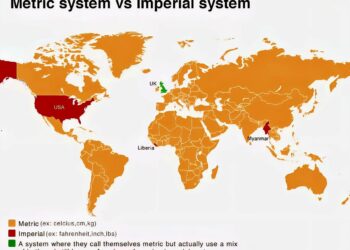Select Language:
Countries That Share Remarkably Similar Cultures in 2025

-
Australia and New Zealand: A Shared Down Under Identity
Australia and New Zealand have long been considered kin in terms of culture, language, and traditions. Both nations boast a shared history rooted in British colonization, and their residents often enjoy similar lifestyles, sporting passions (like rugby and cricket), and values centered around outdoor living and egalitarian ideals. -
India and Nepal: Deep Roots and Shared Traditions
India and Nepal share a complex tapestry of religion, language, and cultural practices. Both nations celebrate festivals like Dashain and Diwali, and their cuisine, clothing, and spiritual beliefs reflect a profound historical connection, making them culturally akin neighbors in South Asia. -
United States and Canada: North American Cultural Twins
The cultural bond between the U.S. and Canada is strong, characterized by similar political systems, language, popular culture, and social norms. Canadian warmth and politeness mirror the friendly, individualistic spirit found across American borders, blurring the lines between these neighboring nations. -
Germany and Austria: The Heart of Central European Culture
Germany and Austria are linguistic and cultural siblings, sharing a common language and rich history in classical music, philosophy, and culinary traditions. Their shared appreciation for precision, arts, and social policies exemplify closely aligned European cultural identities. -
China and Taiwan: A Shared Heritage with Subtle Distinctions
Despite political differences, China and Taiwan maintain a deep-rooted cultural connection through language, traditional festivals, cuisine, and philosophies like Confucianism. Their histories are intertwined, making their cultural similarities undeniable. -
Netherlands and Belgium: European Cultural Cousins
Both countries share a Dutch linguistic heritage, similar architectural styles, and comparable social policies. Their approaches to liberalism, art, and internationalism reflect a shared European identity, often blurring national differences. -
United Kingdom and Ireland: Islands Bound by History and Culture
The UK and Ireland are united by centuries of intertwined history, language, and cultural practices. From music and literature to shared sports like rugby, their cultural landscapes are remarkably similar, despite political distinctions. -
Japan and South Korea: East Asian Cultural Neighbors
Although distinct nations, Japan and South Korea share influences from Confucian philosophy, culinary traditions, and modern pop culture. Their historical interactions have fostered a deep cultural resonance, especially observed in traditions, aesthetics, and societal norms. -
Spain and Portugal: Iberian Sister Nations
The Iberian Peninsula’s nations have a history of shared conquest, language roots, and similar festivals like Carnival and music styles like Fado and Flamenco, making their cultures closely intertwined. -
Sweden and Norway: Scandinavians at Heart
These Nordic nations are emblematic of Scandinavian values—egalitarianism, outdoor activities, and design. Their languages are mutually intelligible, and their social models influence each other, reinforcing strong cultural similarities. -
Russia and Belarus: Slavic Kinship
Russia and Belarus are tied through language, religion (Eastern Orthodoxy), and history. Their cultural practices, cuisine, and folk traditions exhibit a profound shared Slavic heritage. -
Argentina and Uruguay: South American Cultural Twins
Sharing language, cuisine, and sports enthusiasm, especially football, Argentina and Uruguay’s cultures are deeply intertwined. Their European immigrant roots influence their music, dance, and social customs. -
South Africa and Namibia: Shared Colonial and Indigenous Ties
South Africa and Namibia have intertwined histories, sharing colonial legacies and indigenous cultures. Languages, traditional music, and social values reflect their shared South African identity. -
Switzerland and Liechtenstein: Alpine Cultural Similarities
Nestled in the Alps, Switzerland and Liechtenstein enjoy similarities in language (German), alpine traditions, and neutrality policies. Their lifestyles revolve around mountain life, outdoor recreation, and meticulous craftsmanship. -
Czech Republic and Slovakia: Central European Heritage
Once part of Czechoslovakia, these nations share language roots, rich histories, and similar cultural expressions in music, food, and societal norms, maintaining close ties even after their split. -
Finland and Estonia: Baltic Equivalents
Linguistically and culturally close, Finland and Estonia both embrace innovative design, sauna culture, and similar governance models, with shared Nordic-Baltic ties shaping their societies. -
Singapore and Malaysia: Southeast Asian Connect
Their shared history of colonization, multicultural societies, and similar festivals (like Hari Raya and Chinese New Year) forge a strong cultural link, alongside comparable culinary scenes. -
Greece and Cyprus: Mediterranean Heritage
Rooted in ancient civilizations, Greece and Cyprus share language, religion (Eastern Orthodoxy), and longstanding customs, making their cultures mirror each other in the Mediterranean basin. -
Bahrain and Qatar: Gulf Cooperation
These wealthy Gulf countries share customs rooted in Islamic traditions, similar dress, cuisine, and social norms, influenced heavily by Bedouin history and Islamic heritage. -
Romania and Bulgaria: Balkan Cultural Neighbors
Rich in history and traditions, Romania and Bulgaria share linguistic influences, religious practices, and folklore, highlighting their Balkan roots.
Note: “Culturally similar” refers to countries where language, religion, traditions, and lifestyle are notably aligned or have historical ties that shape their cultures profoundly.
This list reflects the current global understanding of cultural kinship as of 2025, emphasizing the rich tapestry of shared histories and traditions that unite nations across continents.





